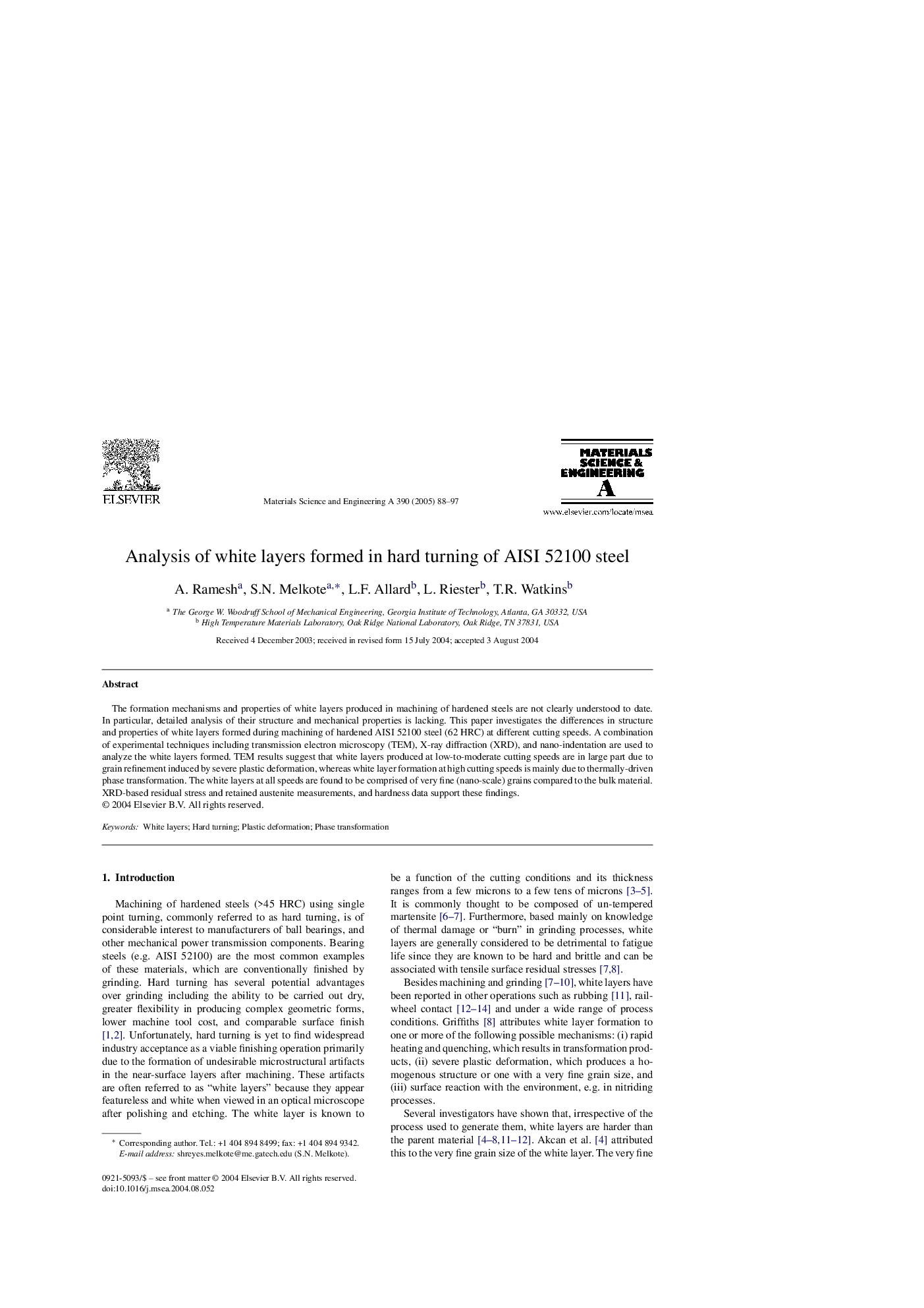| Article ID | Journal | Published Year | Pages | File Type |
|---|---|---|---|---|
| 9796658 | Materials Science and Engineering: A | 2005 | 10 Pages |
Abstract
The formation mechanisms and properties of white layers produced in machining of hardened steels are not clearly understood to date. In particular, detailed analysis of their structure and mechanical properties is lacking. This paper investigates the differences in structure and properties of white layers formed during machining of hardened AISI 52100 steel (62 HRC) at different cutting speeds. A combination of experimental techniques including transmission electron microscopy (TEM), X-ray diffraction (XRD), and nano-indentation are used to analyze the white layers formed. TEM results suggest that white layers produced at low-to-moderate cutting speeds are in large part due to grain refinement induced by severe plastic deformation, whereas white layer formation at high cutting speeds is mainly due to thermally-driven phase transformation. The white layers at all speeds are found to be comprised of very fine (nano-scale) grains compared to the bulk material. XRD-based residual stress and retained austenite measurements, and hardness data support these findings.
Related Topics
Physical Sciences and Engineering
Materials Science
Materials Science (General)
Authors
A. Ramesh, S.N. Melkote, L.F. Allard, L. Riester, T.R. Watkins,
